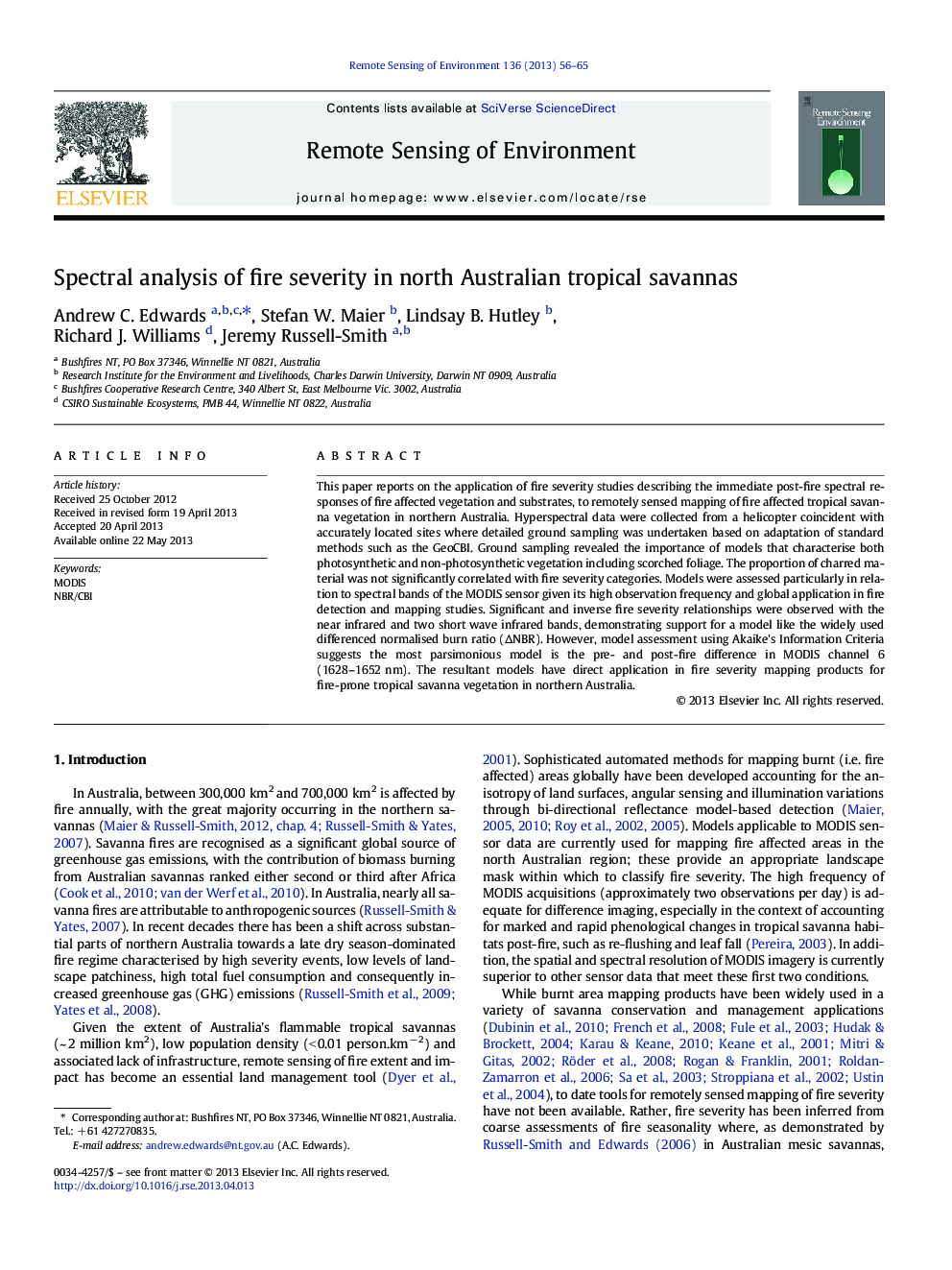| Article ID | Journal | Published Year | Pages | File Type |
|---|---|---|---|---|
| 6347383 | Remote Sensing of Environment | 2013 | 10 Pages |
Abstract
This paper reports on the application of fire severity studies describing the immediate post-fire spectral responses of fire affected vegetation and substrates, to remotely sensed mapping of fire affected tropical savanna vegetation in northern Australia. Hyperspectral data were collected from a helicopter coincident with accurately located sites where detailed ground sampling was undertaken based on adaptation of standard methods such as the GeoCBI. Ground sampling revealed the importance of models that characterise both photosynthetic and non-photosynthetic vegetation including scorched foliage. The proportion of charred material was not significantly correlated with fire severity categories. Models were assessed particularly in relation to spectral bands of the MODIS sensor given its high observation frequency and global application in fire detection and mapping studies. Significant and inverse fire severity relationships were observed with the near infrared and two short wave infrared bands, demonstrating support for a model like the widely used differenced normalised burn ratio (âNBR). However, model assessment using Akaike's Information Criteria suggests the most parsimonious model is the pre- and post-fire difference in MODIS channel 6 (1628-1652Â nm). The resultant models have direct application in fire severity mapping products for fire-prone tropical savanna vegetation in northern Australia.
Keywords
Related Topics
Physical Sciences and Engineering
Earth and Planetary Sciences
Computers in Earth Sciences
Authors
Andrew C. Edwards, Stefan W. Maier, Lindsay B. Hutley, Richard J. Williams, Jeremy Russell-Smith,
